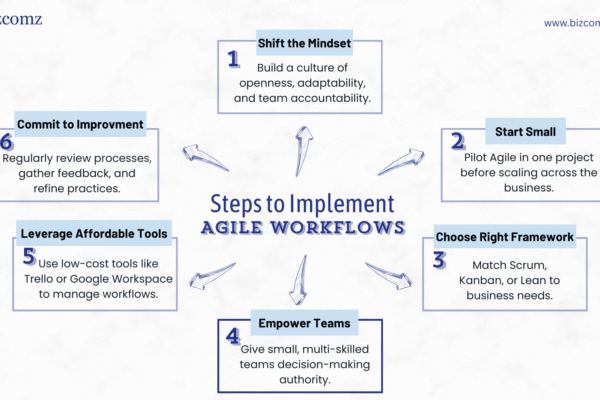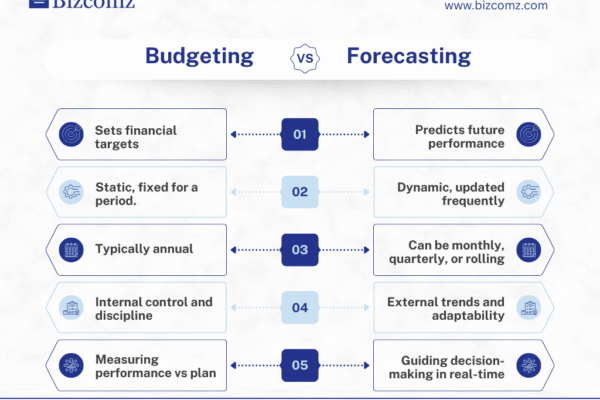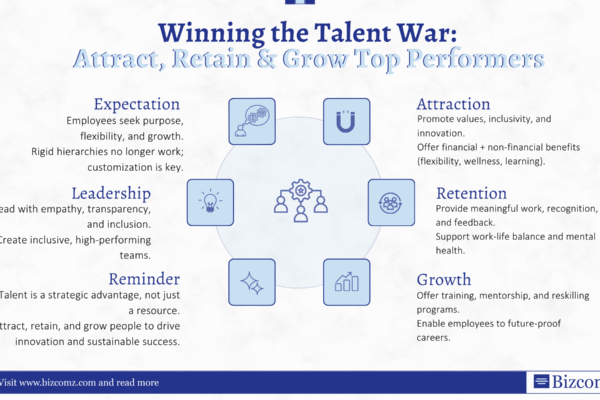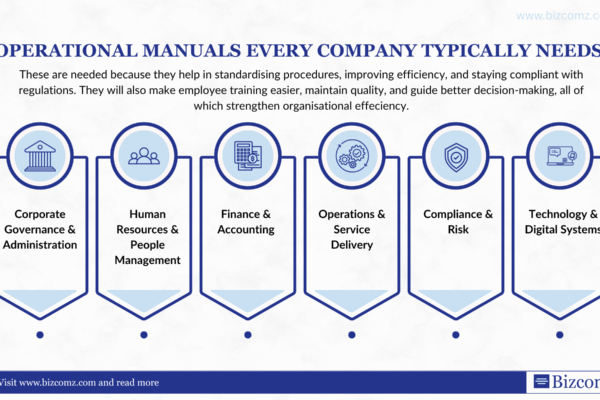Financial forecasting is a critical component of success for any business, but for FinTech companies, it is especially vital. The FinTech industry operates at the intersection of finance and technology, two sectors characterized by rapid innovation, regulatory scrutiny, and intense competition. Accurate financial forecasting enables FinTech companies to make informed decisions, secure funding, manage risks, and scale effectively. However, the unique challenges of the FinTech landscape—such as evolving customer behavior, regulatory changes, and technological disruptions—make financial forecasting particularly complex.
In this article, we will explore the key principles and strategies for effective financial forecasting in the FinTech sector. By understanding these concepts, FinTech leaders can build robust forecasting models that drive growth and resilience in an ever-changing environment.
Understanding the Importance of Financial Forecasting in FinTech
Financial forecasting is the process of predicting a company’s future financial performance based on historical data, market trends, and strategic assumptions. For FinTech companies, this process is essential for several reasons. First, it helps businesses plan for growth by identifying revenue opportunities and potential challenges. Second, it provides investors and stakeholders with a clear picture of the company’s financial health and future prospects, which is crucial for securing funding. Third, it enables companies to manage cash flow, allocate resources efficiently, and mitigate risks.
In the FinTech sector, where innovation cycles are short and market dynamics are unpredictable, financial forecasting takes on added significance. Companies must anticipate shifts in customer demand, regulatory requirements, and competitive pressures to stay ahead. A well-crafted financial forecast can serve as a roadmap, guiding decision-making and ensuring long-term sustainability.
Building a Strong Foundation: Data and Assumptions
The accuracy of a financial forecast depends largely on the quality of the data and assumptions used to create it. FinTech companies must start by gathering reliable historical data, including revenue, expenses, customer acquisition costs, and user engagement metrics. This data provides a baseline for understanding past performance and identifying trends.
However, historical data alone is not enough. FinTech companies must also incorporate forward-looking assumptions that reflect the unique dynamics of their industry. For example, how will changes in interest rates impact lending platforms? How will new regulations affect payment processors? How will emerging technologies like blockchain or artificial intelligence create new opportunities or threats? These questions require careful analysis and informed assumptions.
To ensure accuracy, FinTech companies should involve cross-functional teams in the forecasting process. Input from product development, marketing, compliance, and operations can provide valuable insights and help align the forecast with the company’s strategic goals.
Leveraging Technology for Smarter Forecasting
One of the defining characteristics of FinTech companies is their reliance on technology to drive innovation. This same technological expertise can be harnessed to improve financial forecasting. Advanced analytics tools, machine learning algorithms, and cloud-based platforms can enhance the accuracy and efficiency of forecasting models.
For example, predictive analytics can analyze large datasets to identify patterns and trends that may not be apparent through traditional methods. Machine learning algorithms can refine forecasts over time by learning from new data and adjusting predictions accordingly. Cloud-based platforms enable real-time collaboration and data sharing, ensuring that all stakeholders have access to the most up-to-date information.
By leveraging these technologies, FinTech companies can create dynamic forecasting models that adapt to changing conditions and provide actionable insights.
Incorporating Scenario Analysis
Given the inherent uncertainty in the FinTech sector, scenario analysis is a powerful tool for financial forecasting. Scenario analysis involves creating multiple forecasts based on different assumptions about the future. For example, a FinTech company might develop a “best-case” scenario, a “worst-case” scenario, and a “most likely” scenario to account for various outcomes.
This approach allows companies to prepare for a range of possibilities and develop contingency plans. For instance, if a new regulation is introduced, how will it impact revenue? If customer acquisition costs rise, how will the company adjust its marketing strategy? By exploring these questions in advance, FinTech companies can respond more effectively to unexpected challenges.
Scenario analysis also helps companies communicate risks and opportunities to investors and stakeholders. By presenting a range of potential outcomes, FinTech leaders can demonstrate their preparedness and build confidence in their ability to navigate uncertainty.
Focusing on Key Metrics
In the fast-paced FinTech industry, it is easy to get overwhelmed by the sheer volume of data available. To avoid this, companies should focus on a few key metrics that are most relevant to their business model. These metrics will vary depending on the type of FinTech company, but some common examples include:
– Customer Acquisition Cost (CAC): The cost of acquiring a new customer, which is critical for understanding the efficiency of marketing efforts.
– Lifetime Value (LTV): The total revenue a company can expect from a customer over their lifetime, which helps assess the long-term profitability of customer relationships.
– Monthly Recurring Revenue (MRR): A measure of predictable revenue, particularly important for subscription-based FinTech models.
– Churn Rate: The rate at which customers stop using a service, which provides insights into customer satisfaction and retention.
– Gross Margin: The difference between revenue and the cost of goods sold, which indicates the profitability of core operations.
By tracking these metrics and incorporating them into financial forecasts, FinTech companies can gain a clearer understanding of their financial performance and make data-driven decisions.
Aligning Forecasting with Strategic Goals
Financial forecasting should not exist in a vacuum; it must be closely aligned with the company’s strategic goals. For FinTech companies, this means considering how factors like market expansion, product development, and regulatory compliance will impact financial performance.
For example, if a company plans to launch a new product, the forecast should account for the associated costs and potential revenue. If the company is entering a new market, the forecast should reflect the unique challenges and opportunities of that market. By aligning the forecast with strategic priorities, FinTech companies can ensure that their financial planning supports their overall vision.
Communicating the Forecast Effectively
A financial forecast is only as valuable as the insights it provides. To maximize its impact, FinTech companies must communicate the forecast effectively to internal and external stakeholders. This involves presenting the data in a clear, concise, and visually appealing format.
Visual tools like charts, graphs, and dashboards can help stakeholders understand complex information and identify key trends. Additionally, FinTech leaders should provide context for the forecast, explaining the assumptions behind the numbers and the potential risks and opportunities. This transparency builds trust and ensures that everyone is on the same page.
Continuously Refining the Forecast
Financial forecasting is not a one-time exercise; it is an ongoing process that requires regular updates and refinements. FinTech companies should review their forecasts frequently, incorporating new data and adjusting assumptions as needed. This iterative approach ensures that the forecast remains relevant and accurate in a rapidly changing environment.
By continuously refining their forecasts, FinTech companies can stay agile and responsive, positioning themselves for long-term success in a competitive and dynamic industry.
Conclusion
Financial forecasting is a cornerstone of success for FinTech companies, enabling them to navigate uncertainty, seize opportunities, and drive growth. By building a strong foundation of data and assumptions, leveraging technology, incorporating scenario analysis, and aligning forecasts with strategic goals, FinTech leaders can create robust forecasting models that support their vision.
In an industry defined by innovation and disruption, the ability to anticipate the future and plan accordingly is more important than ever. With the right approach to financial forecasting, FinTech companies can not only survive but thrive in the face of uncertainty, delivering value to customers, investors, and stakeholders alike.







